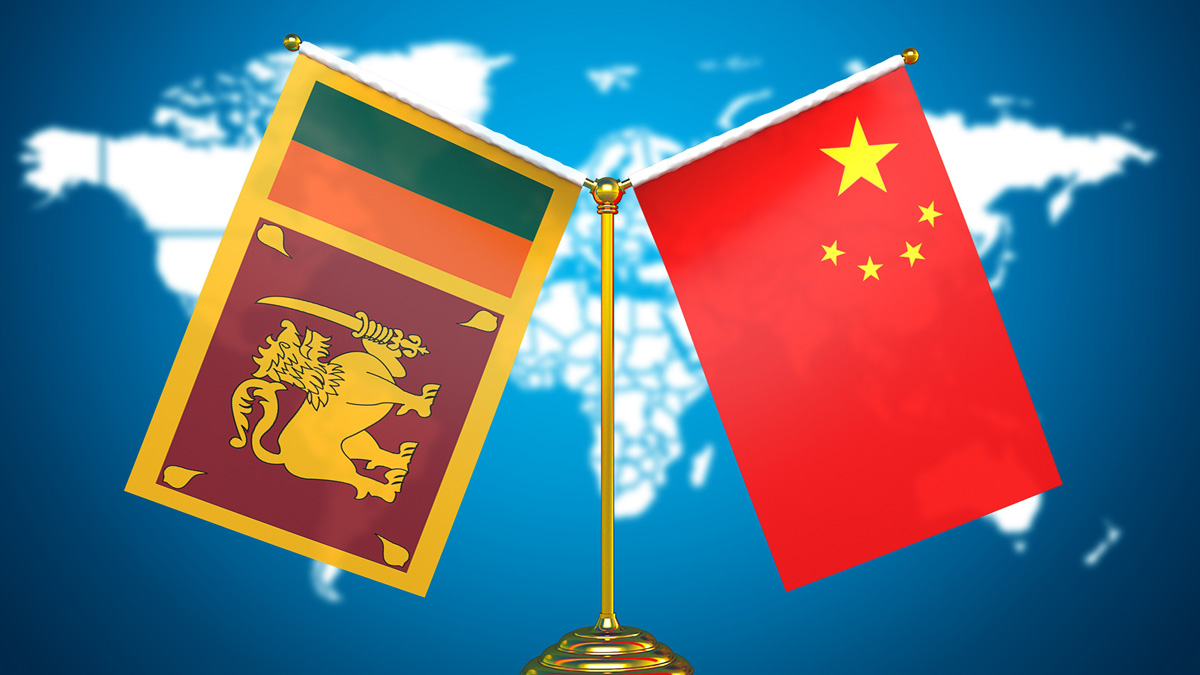
Sri Lanka Forced to Enter New Loan Agreement with China Amid Mounting Debt Crisis
Amid a looming financial crisis, Sri Lanka has struck a pivotal agreement with the Export-Import (Exim) Bank of China to manage approximately $4.2 billion of the nation’s mounting debt. The announcement, made by Sri Lanka’s finance ministry on October 12, comes as the country grapples with one of its worst economic crises in history, marked by a critical depletion of foreign exchange reserves.
While the exact terms of the deal remain undisclosed, Sri Lankan authorities have expressed their hope that it will offer much-needed fiscal flexibility, enabling the country to advance its ambitious reform program. Sri Lanka’s government has also expressed optimism that this agreement will facilitate the release of a portion of the $2.9 billion International Monetary Fund (IMF) bailout, aimed at alleviating the nation’s escalating debt burden. This development could pave the way for the disbursement of the second IMF tranche, amounting to approximately $330 million.
Notably, last year, Sri Lanka made history in the Asia-Pacific region as it defaulted on $46 billion in foreign debt amid a severe economic crisis.
In a statement, Sri Lankan Treasury Secretary K. M. Mahinda Siriwardana acknowledged the significance of the agreement, emphasizing its role in advancing Sri Lanka’s economic recovery. He thanked China’s Exim Bank for their support in addressing the nation’s debt situation, marking a significant milestone for the country.
Despite Sri Lanka’s appreciation for China’s role in this deal, questions arise concerning its transparency and the potential impact on ongoing debt restructuring discussions. This agreement overshadows separate negotiations involving the IMF, Paris Club members, and other creditors, including Japan and India, which are scheduled to convene this week in Morocco for discussions on a debt restructuring plan.
While the IMF acknowledged the ongoing talks between Sri Lanka and its creditors, it expressed surprise over the completion of this particular agreement. In tandem with the IMF, Sri Lanka has been engaged in discussions with bondholders and major bilateral creditors since last September, as it grapples with its most severe economic crisis in 70 years.
China stands as Sri Lanka’s largest single creditor, accounting for roughly 52% of its external debt. The conflict over the Exim Bank arrangement has created further complexity in the international bailout efforts.
The IMF has emphasized the need to maintain financial discussions “between our two sides.” Peter Breuer, the IMF’s mission chief for Sri Lanka, underlined the importance of assessing the entire package of agreements to ensure consistency with IMF debt targets, according to Reuters.
This agreement with the Exim Bank comes just a week before China hosts its third Belt and Road Initiative (BRI) Forum in Beijing. While the BRI represents Chinese leader Xi Jinping’s flagship program, it has faced criticism for burdening economically vulnerable nations like Sri Lanka with unsustainable debt. Despite China’s assertion that BRI loans drive economic activity in poorer countries, critics argue that these loans leave many recipients with debt they can’t manage.
One example is Laos, where China funded a high-speed rail line costing nearly half the country’s GDP. According to the Center for Global Development, eight BRI recipient countries—Djibouti, Kyrgyzstan, Laos, the Maldives, Mongolia, Montenegro, Pakistan, and Tajikistan—are at high risk of debt distress due to BRI loans.
Sri Lanka has been struggling to repay the $1.4 billion in Chinese loans it incurred for the construction of the Hambantota Port. The port incurred losses of $300 million in six years until 2017, before it was handed over to a Chinese state-owned firm on a 99-year lease for $1.12 billion. This arrangement raised concerns in the region that China had secured a strategic foothold in the Indian Ocean.
However, the impact of last year’s economic collapse still reverberates through Sri Lanka, leaving its 22 million residents grappling with the aftermath. A dire shortage of foreign reserves prevented the country from importing basic necessities like food and gasoline, which led to widespread protests. As a result, then-President Gotabaya Rajapaksa’s government fell, forcing him to leave the country temporarily. His successor, President Ranil Wickremesinghe, has pledged to restore stability and normalcy in Sri Lanka.
















Comments